Number of IMs before Kona
In my post on Why I am #50WomenToKona I mentioned that Kona WPROs raced more often than their male counterparts:
For Kona 2014, the average number of IMs of the male Pros is 2.8, while the female Pros had raced 3.4 IMs.
Some of the feedback I have received indicate that this not widely known, so this post adds some more detail.
First of all, a clear definition of what I mean by “number of IMs before Kona 2014”. Here are the conditions I have used for the averages used in my post:
- races on or after August 31st 2013 (the date of IM Japan, the start of Kona 2014 qualifying)
- races before October 11th 2014 (the date of the Kona race)
- Ironman-distance races (regardless of wether they are “official” Ironman races or races run by other organizations such as Challenge)
- races that an athlete started (so including finishes as well as DNFs – both are counting towards the “fatigue” an athlete has to deal with before Kona)
Some of these conditions can be fiddled with, but the overall result is still the same – WPRO have raced around 0.5 more IMs than their male counterparts. Here’s a quick comparison of different conditions:
| Male Average | Female average | |
| IM-distance starts | 2.87 | 3.44 |
| Ironman starts | 2.75 | 3.25 |
| Ironman finishes | 2.40 | 2.94 |
| Ironman finishes up to August | 2.40 | 2.92 |
| Ironman results counting in KPR | 2.28 | 2.79 |
Staying with my original definition of “IM-distance starts”, here is a look at the distribution of athletes for the number of races before Kona:
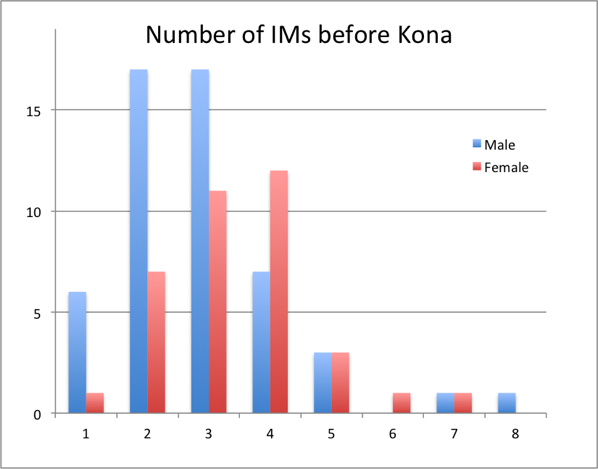
You can clearly see that the main cluster of male athletes has done two or three IMs, while most of the women have done three or four races.
Here is a detailed look at the athletes in each of the groups:
| No of Races | Male | Female |
|---|---|---|
| 1 | Terenzo Bozzone Richie Cunningham Jan Frodeno Paul Matthews Andy Potts Timothy Reed |
Catriona Morrison |
| 2 | Bart Aernouts Craig Alexander Igor Amorelli Kyle Buckingham Daniel Fontana Joe Gambles Ben Hoffman Jeremy Jurkiewicz Sebastian Kienle Timothy O’Donnell Filip Ospaly Ivan Rana Andrew Starykowicz Boris Stein Tim Van Berkel Frederik Van Lierde Cyril Viennot |
Corinne Abraham Liz Blatchford Leanda Cave Daniela Ryf Caitlin Snow Kelly Williamson Heather Wurtele |
| 3 | Faris Al-Sultan Marko Albert Tyler Butterfield James Cunnama Victor Del Corral Bevan Docherty Nils Frommhold Elliot Holtham Pete Jacobs Christian Kramer Eneko Llanos Chris McDonald Luke McKenzie TJ Tollakson Maik Twelsiek Marino Vanhoenacker Michael Weiss |
Simone Braendli Mirinda Carfrae Linsey Corbin Mary Beth Ellis Lucy Gossage Rachel Joyce Meredith Kessler Caroline Steffen Amanda Stevens Jodie Swallow Yvonne Van Vlerken |
| 4 | Paul Ambrose Romain Guillaume Marek Jaskolka David Plese Andreas Raelert Ronnie Schildknecht Axel Zeebroek |
Natascha Badmann Gina Crawford Amber Ferreira Julia Gajer Sofie Goos Asa Lundstroem Elizabeth Lyles Kristin Moeller Kim Schwabenbauer Beth Shutt Michelle Vesterby Bree Wee |
| 5 | Christian Brader Justin Daerr Daniel Halksworth |
Melanie Burke Katja Konschak Lisa Roberts |
| 6 | Sara Gross | |
| 7 | Harry Wiltshire | Jackie Hering |
| 8 | Matthew Russell |
Not all of this racing has been motivated by a desire to qualify for Kona – of course there are other reasons for racing such as trying to win an Ironman or to earn some prize money. Looking at those athletes with five or more races, I think that they were motivated more by trying to qualify than by making money: Only Sara Gross has made more than 20,000$ – she made 40,000$ by winning IM Brasil and IM Mt. Tremblant – but she to race Mt. Tremblant in order to qualify.
In summary, the data shows that women Pros raced more often than their male counterparts. The data also indicates that this is a result of the lower number of Kona slots for women and the resulting higher number of points needed to qualify.

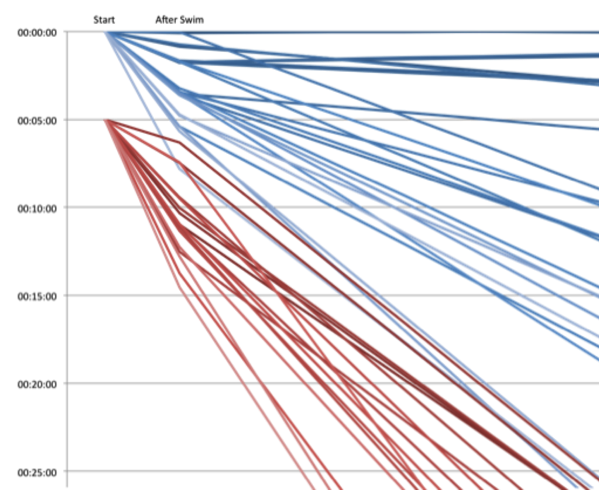
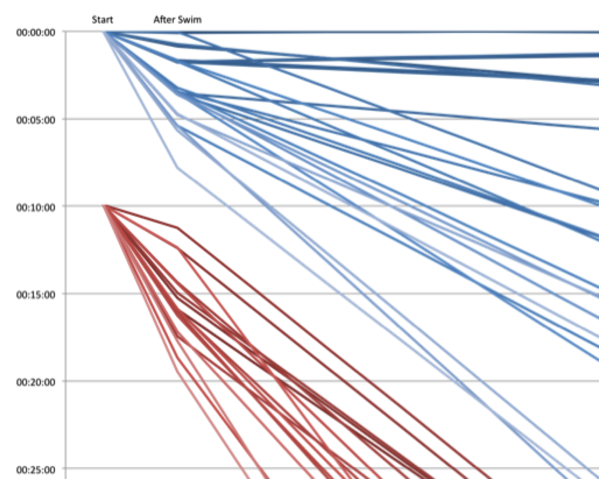

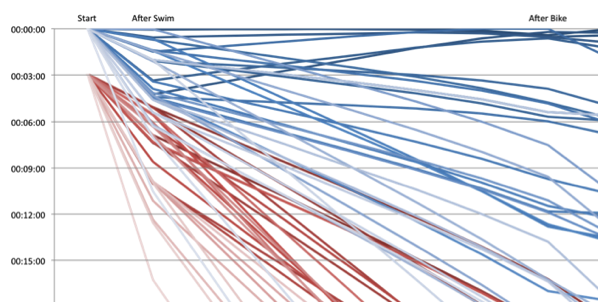
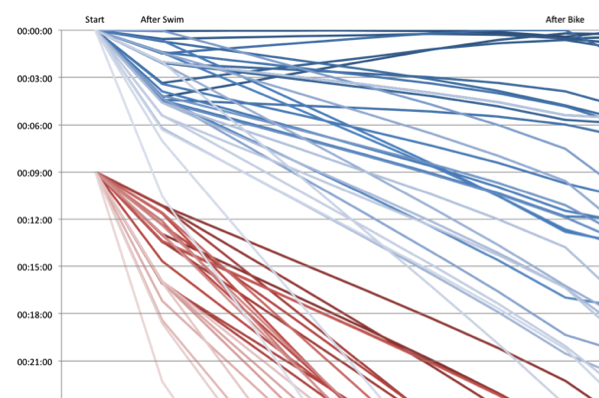
 When discussing the inequality of Kona slots (50 for the men, 35 for the women), one also has to think of effects beyond the simple difference of slots. Most everyone comes up with the immediate consequence that women require more points than the men – in 2014 it was roughly 4.900 vs. 3.500 points that were required for a July slot, and of course that also required more racing by female Kona athletes than for the male Kona qualifiers.
When discussing the inequality of Kona slots (50 for the men, 35 for the women), one also has to think of effects beyond the simple difference of slots. Most everyone comes up with the immediate consequence that women require more points than the men – in 2014 it was roughly 4.900 vs. 3.500 points that were required for a July slot, and of course that also required more racing by female Kona athletes than for the male Kona qualifiers.